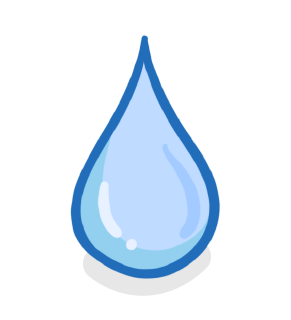Potable Water
This lesson covers:
- What we mean by 'potable' water
- The three criteria for potable water
- The steps involved in producing potable water
- What 'desalination' is, and how it works

What is potable water?
Water that is completely pure
Water that can be places in pots
Water that is safe to drink
Water that is not safe to drink
|
What are the three criteria for water to be considered potable?
|
Where does the UK get most of its potable water from?
Seawater
Fresh water sources
|
Which of the following are usually sources of fresh water?
(Select all that apply)
Lakes
Seas
Oceans
Aquifers
Rivers
|
Surface Water vs Ground Water
ocean / ground / aquifers / seas / rivers / air
- Surface water is water that is exposed to the . It includes lakes, , and reservoirs.
- Ground water is water that is found under the , such as in .
|
What are the benefits of relying on fresh water?
(Select all that apply)
It can easily evaporate when it's sunny
It is easy to access
It is replaced frequently
|
Three stages of treating fresh water
sterilise / ultraviolet / chlorine / filter / sand
- First, pass the water through a wire mesh. This will out any large objects like plastic bottles or leaves.
- Second, pass the water through a bed of and gravel. This will filter out smaller things like bits of rock.
- Lastly, the water to kill any microorganisms. There are three different ways to do this: 1) bubbling gas through it, 2) exposing it to ozone, 3) exposing it to radiation.
|
What is desalination?
The extraction of potable water from sea water
The purification of potable water from waste water
The extraction of pure water from fresh water
|
What is the main drawback of using desalination to get potable water?
|
What are the two main techniques used in the process of desalination?
Simple distillation
Fractional distillation
Dialysis
Reverse osmosis
|